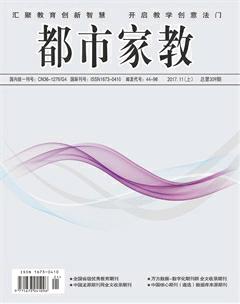Starbucks'FDI Development Analysis
郭鹏
【Abstract】Foreign direct investment (FDI) occurs when a firm invests directly in facilities to produce and/or market a product in a foreign country. According to the U.S. Department of Commerce, FDI occurs whenever a U.S. citizen, organization, or affiliated group takes an interest of 10 percent or more in a foreign business entity. Once a firm undertakes FDI, it becomes a multinational enterprise. An example of FDI is given in the closing case, thats the case of Starbucks expansion.
【Key words】Starbucks expansion, Foreign direct investment (FDI), coffee store
Initially Starbucks expanded internationally by licensing its format to foreign
operations. It soon became disenchanted with this strategy, because the company realized that a pure licensing agreement would not give Starbucks the control needed to ensure that the licensees closely followed Starbucks successful formula. Starbucks corporation set out on its current course in the 1980s when the companys director of marketing, Howard Schultz, who later become CEO, came back from a trip to Italy enchanted with the Italian coffee house experience. The basic strategy was to sell the companys own products in a tastefully designed coffeehouse setting. This formula met with spectacular success in the United States. In 1995, with almost 700 stores across the United States, Starbucks began exploring foreign opportunities. Its first target market was Japan. Although Starbucks had resisted a franchising strategy in North America, where its stores are company owned, Starbucks initially decided to license its format in Japan. However, the company also realized that a pure licensing agreement would not give Starbucks the control needed to ensure that the Japanese licensees closely followed Starbucks successful formula. So the company established a joint venture with a local retailer, Sazaby Inc. Each company held a 50 percent stake in the venture, Starbucks Coffee of Japan. Starbucks initially invested $10 million in
this venture, its first foreign direct investment. The Starbucks format was then licensed to the venture, which was charged with taking over responsibility for growing Starbucks presence in Japan.
Starbucks has now elected to expand internationally primarily through local joint ventures, to whom it licenses its format as opposed to a pure licensing strategy. Today, Starbucks is a global roaster and retailer of coffee with over 8,400 stores, more than 2,000 of which are to be found in 31 foreign countries. In 1995, with almost 700 stores across the United States, Starbucks began exploring foreign opportunities. Its first target market was Japan. In Japan the company established a joint venture with a local retailer, Sazaby Inc. The Starbucks format was then licensed to the venture. By early 2005, Starbucks had almost 550 stores in Japan and plans to continue opening them at a brisk pace. In Asia, however, Starbucks became disenchanted with some of the straight licensing arrangements and converted several into joint venture arrangement or wholly owned subsidiaries. A similar development occurred In South Korea, where Starbucks initially licensed its format to ESCO Korea Ltd. in 1999. Although ESCO soon had 10 very successful stores open, Starbucks felt that ESCO would not be able to achieve the companys aggressive growth targets, so in December 2000 it converted its licensing arrangement into a joint venture with Shinsegae, the parent company of ESCO. By October 2000, Starbucks had invested some $52 million in foreign joint venture. As its first entry point on the European mainland, Starbucks chose Switzerland. Drawing on its experience in Asia, the company entered into a joint venture with a Swiss company, Bon Appetit Group, Switzerlands largest food service company. Bon Appetit was to hold a majority stake in the venture, and Starbucks would license its format to the Swiss company using a similar agreement to those it had used successfully in Asia. This was followed by a joint venture in Germany with KarstadtQuelle, one of the countrys largest retailers. In early 2005, there has been more than 2,000 international stores, Starbucks announced that it believed there was the potential for up to 15,000 stores outside of the United States. In conclusion, Starbucks has elected to expand internationally primarily through local joint ventures, to whom it licenses its format as opposed to a pure licensing strategy.endprint

